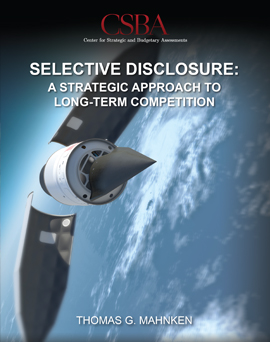
Although the Department of Defense has embraced the concept of "great power competition" as a planning and investment guide, it has yet to fully adapt its processes and priorities to maximize U.S. advantages in this environment. As the United States develops new defense technologies and concepts, policy planners should consider which ones to reveal, as well as the timing and extent to which they are revealed. As evidenced by Chinese and Russian disclosures, these considerations include not only concealing systems to delay an adversary’s response, but also disclosing information for strategic effect, such as provoking competitors to expend resources on defensive countermeasures based upon an incomplete grasp of a perceived capability.
In Selective Disclosure: A Strategic Approach to Long-Term Competition, CSBA President and CEO Thomas G. Mahnken outlines a framework for revealing or concealing information for strategic effect in an era of great power competition. Dr. Mahnken explores three separate models for developing defense capabilities and details how each model impacts a competitor’s response. Drawing upon historical case studies, he illustrates past applications of the approach as well as the benefits and drawbacks of each approach. Finally, Dr. Mahnken proposes a series of criteria for applying selective disclosure under current strategic conditions.



























